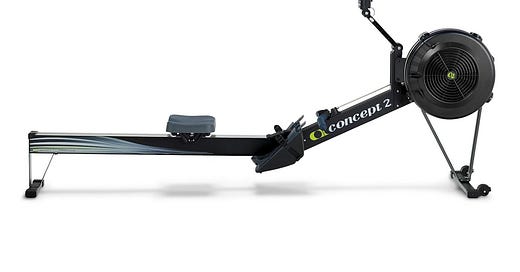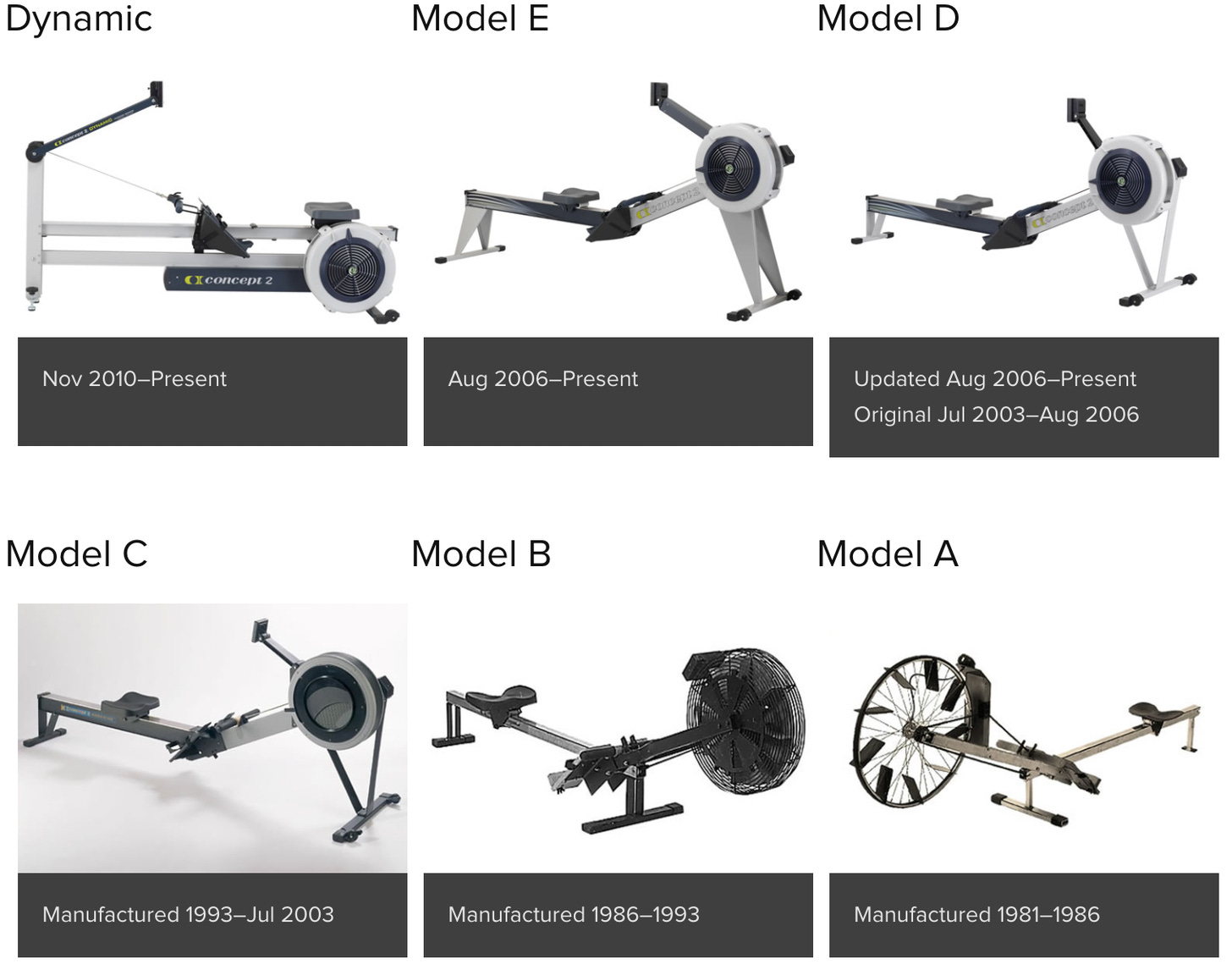Mark Slavonia (MJS) is an investor, a pilot, and an avid cyclist. He wrote about kitchen ballet, traveler’s checks, 5g interference, and more. He posts other things that are interesting on his website and on Twitter.
Mark here. This is a Concept 2 rowing machine. A new one costs $900. Twenty years ago, a new one cost $900. A used one, if you can find one, would cost at least $700 on any city’s Craigslist even before the plague. They are simple and indestructible. They are made in Vermont by a family-owned company that employs about 100 people. Few serious rowers use any other rowing machine.
Image source: Concept 2 website, www.concept2.com
Why is this interesting?
The fitness equipment business has few heroes. Most exercise machines quickly become laundry racks then are given away on curbsides and garage sales. Some companies try to build their business by selling recurring revenue memberships or constantly pushing small changes and innovations that make their customers insecure if they’re not using the latest equipment.
Concept 2 Rowing Machines, 1981-2020 (source: www.concept2.com)
Concept 2 takes a different approach. It is not out to maximize the dollars that it extracts from its users. It never raised venture capital, and its models from 30 years ago are still widely used in homes, schools, and gyms. A few small new features have been added over the years, but none alter the fundamentals of the indoor rowers. By keeping the price of the product relentlessly low, they’ve faced limited competition from cheaper machines, none of which can compete with Concept 2’s reputation for quality, reliability, and standardization.
There’s a thread that runs from Concept 2 through high-profile, high-tech fitness companies like Strava and Peloton. Every single Concept 2 rowing machine is an ergometer (“erg,” often used as shorthand for rowing machine), measuring the user’s actual power and calibrating it to match every other Concept 2 ever made, going back to 1981. Since 2002, Concept 2 has run a simple, free logbook function on its website where rowers can record their times over distances, track their progress, and compare themselves to rowers everywhere. The founders of Strava were collegiate rowers familiar with Concept 2 erg, and Peloton’s output calculation operates on essentially the same principle as the Concept 2 erg.
Concept 2 has never tried to change into a tech company or a social network. The benefit from the community that Concept 2 has created accrues to its users. The ubiquity of Concept 2 ergs is on display every year at the prestigious C.R.A.S.H.-B. World Indoor Rowing Championships, held each year in Boston, MA. Concept 2 is a sponsor of the event and the only machine ever used at these championships.
Concept 2 rowing machines at the World Indoor Rowing Championships
Indoor rowing is hard. It’s a great workout, but it can be very intense. Some coaching is required to avoid injury. You can’t really read while on the erg, and even watching TV is a challenge. Concept 2 machines are loud. The machine’s digital display provides essential time, speed, and distance information but little entertainment. It’s a quality product people like to use from a company that doesn’t gouge their customers: an uncommon thing to say in a fitness landscape littered with equipment that can cost five digits and is loaded with gimmicks and proprietary, hard-to-service parts.
Personally, I love the Concept 2. When I walk into a tiny hotel gym and spot one slumbering disused in a dusty corner far from the MSNBC on the flat-screen TVs, it’s like my own personal loud, sweaty Christmas. (MJS)
Book of the Day:
WITI contributor Scott Stedman, who explored the different genres of murder fiction in our Murder Mystery Edition, has just published his debut YA mystery, Mouse. It's the story of a young hacker who uses code like magic. (NRB)
Quick Links:
One day, I’m going to write a WITI about my thoughts on nudge theory. For now, Tim Harford had a good FT piece from the weekend about it. (NRB)
Some good questions from friend of WITI Tom Critchlow on why every executive dashboard is terrible. (NRB)
While I have you (and speaking of dashboards)—Variance, my company, is now open for signups. So if you are in marketing or sales or product at a software company and interested in getting better intel and signals about your customer base, take a look around and sign up. (NRB)
NY Times says Wordle drove “tens of millions” of new users, record growth (NRB)
WITI x McKinsey:
An ongoing partnership where we highlight interesting McKinsey research, writing, and data.
A playbook for navigating inflation. Few executives have faced the challenge of leading a company through an inflationary spike like today’s. Lessons from strong leaders and bold action can help CEOs make the decisions that only they can make. Here’s how.
–-
Thanks for reading,
Noah (NRB) & Colin (CJN) & Mark (MJS)
—
Why is this interesting? is a daily email from Noah Brier & Colin Nagy (and friends!) about interesting things. If you’ve enjoyed this edition, please consider forwarding it to a friend. If you’re reading it for the first time, consider subscribing (it’s free!).









I was introduced to these via Crossfit East River 7 years ago. What a gift.